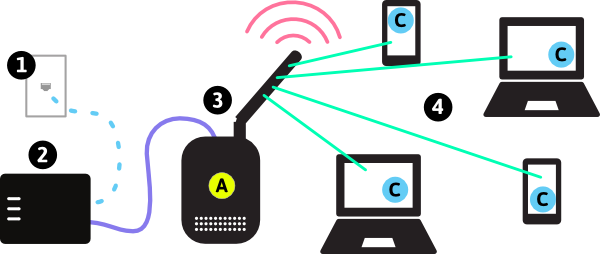The generation of Wireless Device revenue is primarily built on a classic and highly effective business model: the direct sale of physical hardware to consumers and businesses. As the market continues its steady and massive growth, with its valuation projected to reach an astounding USD 2569.50 billion by 2035, this straightforward transactional model remains the financial bedrock of the industry. This financial growth, which is forecast to advance at a compound annual growth rate of 3.96% between 2025 and 2035, is driven by the colossal volume of device sales, from high-value smartphones and laptops to a long tail of lower-cost wearables and IoT devices, creating one of the largest and most valuable manufacturing industries in the world.
The primary and most significant revenue stream in the wireless device market is the one-time sale of the device itself. When a consumer buys a new iPhone, a Samsung Galaxy phone, a Dell laptop, or a pair of Sony wireless headphones, that transaction is the core revenue-generating event. The revenue for the manufacturer is the wholesale price at which they sell the device to retailers or mobile carriers, while the total market revenue is based on the final retail price paid by the consumer. The sheer scale of this model is breathtaking; with over a billion smartphones sold each year, in addition to hundreds of millions of other devices, the aggregate revenue from these hardware sales runs into the trillions of dollars.
While the upfront hardware sale is the core, leading companies in the industry are increasingly generating a significant and highly profitable stream of recurring revenue from associated services and software. Apple is the master of this model. After a customer buys an iPhone, Apple generates ongoing revenue from them through the sale of apps and in-app purchases on the App Store (from which it takes a commission), subscriptions to services like Apple Music, Apple TV+, and iCloud storage, and from AppleCare warranty services. This high-margin services revenue is a crucial part of the business model, as it increases the lifetime value (LTV) of each customer and creates a more stable and predictable income stream that is less dependent on the cyclical nature of hardware sales.
For many devices in the Internet of Things (IoT) space, the revenue model is slightly different and often involves a recurring service component from the outset. For example, a company that sells a wireless home security system may sell the hardware (cameras and sensors) at a low margin or even a loss, with the primary goal of signing the customer up for a recurring monthly monitoring service fee, which is where the real profit is made. Similarly, a company that sells industrial IoT sensors may generate its revenue not from the sale of the sensors themselves, but from a recurring subscription to the cloud-based data analytics platform that interprets the data from those sensors. This shift towards service-based and recurring revenue models is a key trend across the entire wireless device industry.
Explore Our Latest Trending Reports:
Audio Devices And Component Market
Automated Number Plate Recognition And Detection Sensor Market



